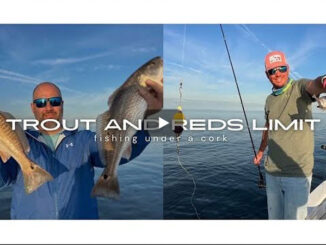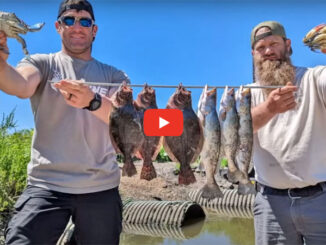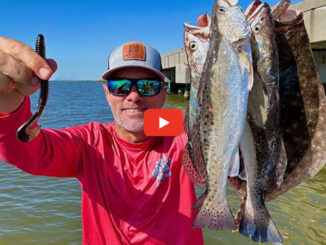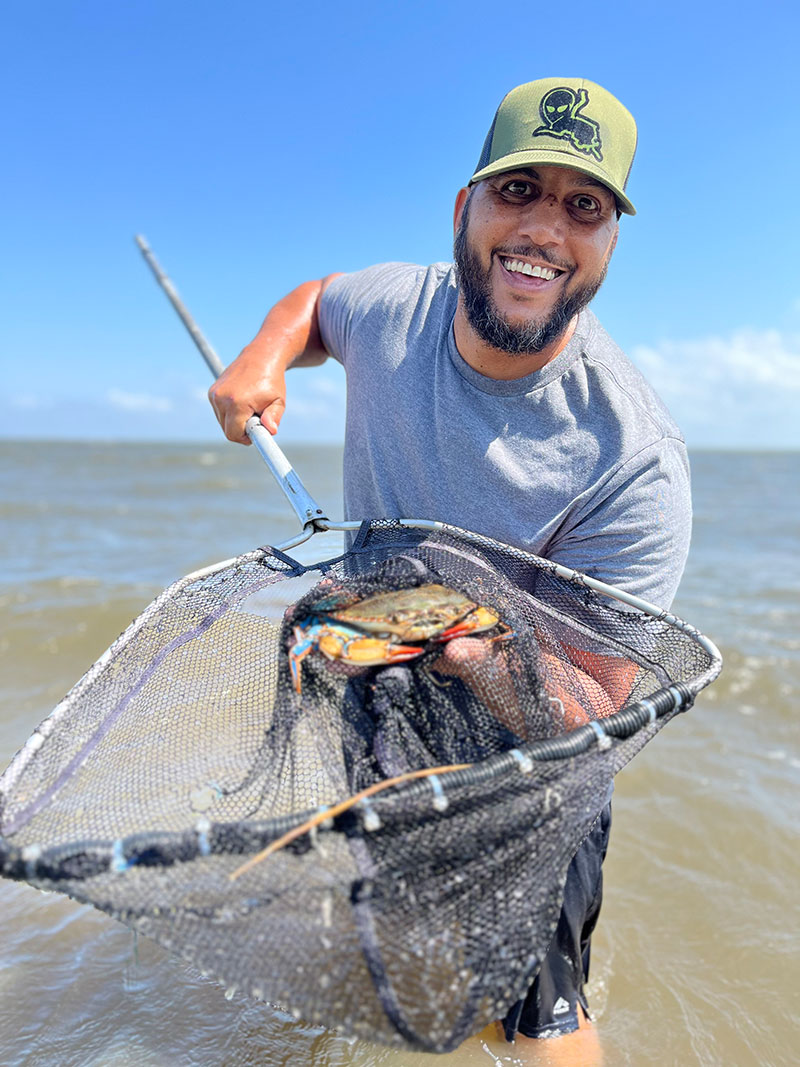 As the summertime heat sets in across South Louisiana, the crabbing bite seems to improve with every day that goes by.
As the summertime heat sets in across South Louisiana, the crabbing bite seems to improve with every day that goes by.
However, for Corey LaBostrie of Lacombe, it doesn’t matter if the crabs are biting or not! The reason is that LaBostrie’s style of catching crabs doesn’t depend on the typical tools that crabbers often use. Things like hand lines, crab nets and turkey necks are all meaningless to the Lacombe fisherman.
All he needs is something called a “crab pusher” to catch crabs.
“This is how they used to do it when I was growing up in Lacombe,” the 51-year-old said. “All we needed was a pusher, a dip net, and a stretch of shoreline with grass growing on the bottom and we’d clean up!”
The technique
LaBostrie has lived in Lacombe since 1977. It was then that he was introduced to what the locals call “pushing for crabs.” This technique involves pushing a thin blade across the bottom (Picture an upside-down lawnmower handle). The tool that LaBostrie uses is made of fiberglass which is incredibly light.
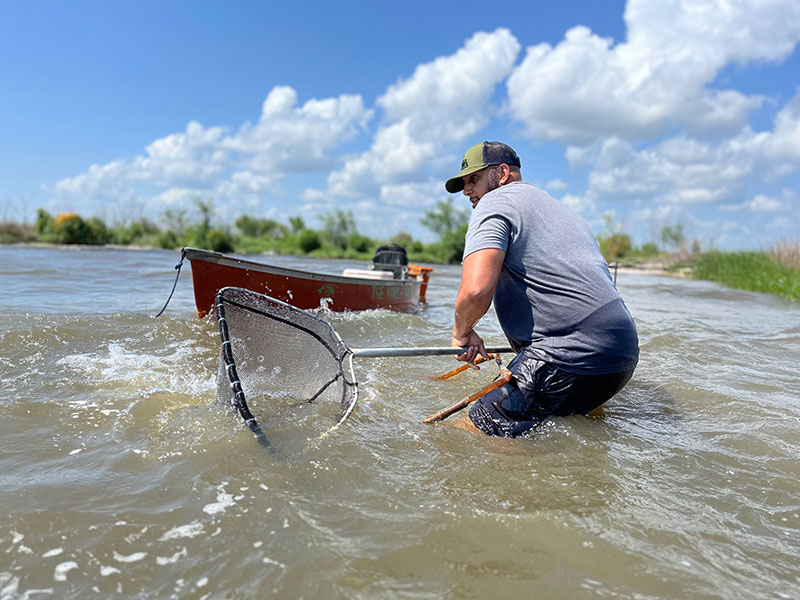
chases it down.
“This is an antique right here — a 5-foot long pusher made of solid fiberglass,” he said. “This should be in a museum or something.”
As he pushes the fiberglass tool, the blade tears through the grass where the crabs are hiding and causes them to flee. After spotting the crab, the angler rests the bar on his stomach and scoops the crab up with his dip net. LaBostrie recommends a customized dip net that is suited for the flat, sandy bottom of Lake Pontchartrain.
“My net has a flat tip on it so it covers more area when I drag it along the bottom,” he said.
“This technique was taught to me by my elders here in Lacombe when I was growing up. I remember Mr. Herbert Batiste going all the way from Bayou Lacombe to Goose Point just scooping up crabs,” LaBostrie said.
How it’s done
I joined LaBostrie on a trip so I could see firsthand his brilliantly simplistic method. We met at the end of Lake Road in Lacombe. As I drove up, LaBostrie was unloading his 13-foot Coleman canoe from the back of his truck into the lake. Not wasting any time on pleasantries, he motioned with his hand, “Let’s go,” and started walking in two feet of water pushing the canoe ahead of him.
“This is it man!” LaBostrie said. “This is how we used to do it! So many memories come flooding back when I’m out here pushing.”
As we walked, LaBostrie demonstrated a confidence that was calming. While I was scanning the bottom for crabs, he seemed to know where they were going to be and didn’t even waste his time looking down. After walking around a grassy point in the marsh he settled in and anchored his canoe in a little cove where the water was calm.
He took the push out of the canoe and then the dip net. Then he started pushing the tool through a patch of grass. After a few steps, he released the pusher handle and rose up with the dip net with a violent overhand scoop. After a quick drag of the net back towards his feet, the net reemerged with a blue crab in it.
“It’s just that easy,” LaBostrie said with a confident smile. As we walked the shoreline it took us about two hours to put together a hamper of #1’s with a few #2’s mixed in.
Doubles and papershells
Ask any seafood lover and they’ll tell you that soft-shell crabs are among their favorite to eat. LaBostrie said the great thing about this method of crabbing is that it allows you to scoop up crabs while they’re molted and still soft. They’re known by the locals as “Doubles.”
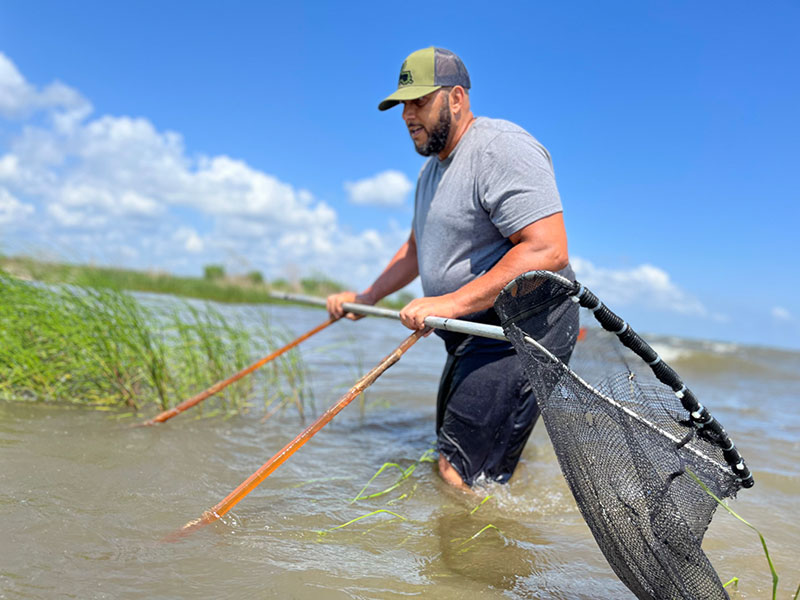
“Ohh I like those doubles!” he said. “What’s happening there is the soft-shell crab is on the bottom and the other crab is literally hugging it on top to protect it because it can’t defend itself.”
LaBostrie recalls trips where he’s caught a dozen soft-shells, otherwise known as busters. While he didn’t manage to catch any soft-shells on this trip, he did catch a “papershell” which is a crab that has progressed just past the soft-shell stage.
“You can just pop the shell off these and fry them up just like you would with a soft-shell,” he said.
While pushing is a simple task, there is some degree of experience needed to avoid something that could potentially turn into a painful situation.
“You have to watch out for stingrays down there,” he said. “If the water’s murky, they’re hard to see and if you step on one you’re going to know it because they’ll whip that tail around and get you with the barb.”
LaBostrie said he can handle the stingrays, but there was another thing that he encountered that rattled him a bit.
“One morning I was pushing right along this shoreline and I literally had a bull shark swim right between my legs,” he said.
Restoring tradition
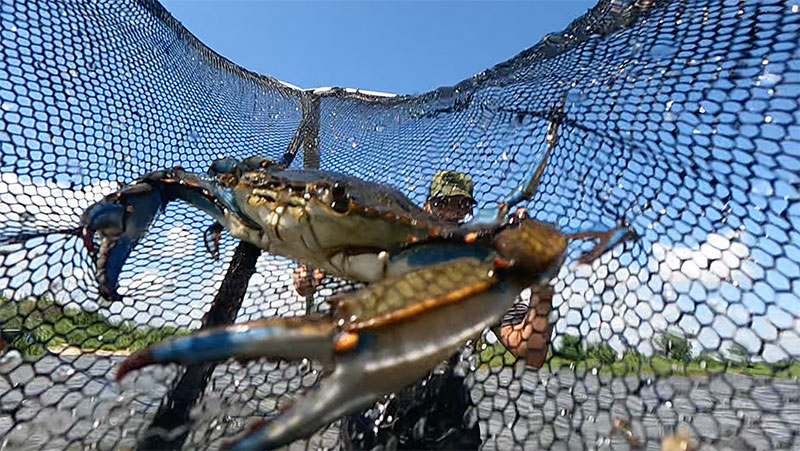
LaBostrie’s motivation for continuing his method of pushing for crabs extends beyond the productive results it yields. He also feels a sense of nostalgia for the way things used to be and sees this as a small way to bring back the good old days. He fondly remembers a time when friends and family would gather at the end of Lake Road.
“Sometimes there were a dozen cars parked out there and everyone would go out into the lake with nets to catch crabs,” he said. “This was the way we crabbed back then.”
However, LaBostrie acknowledges that not many people engage in this traditional method anymore. Nevertheless, he still presses on and is determined to keep the tradition alive and pass it on to the next generation. By continuing to push for crabs and promoting this method, he hopes to preserve the cultural heritage and memories associated with this way of crabbing.
LaBostrie’s efforts are driven by a desire to maintain a connection with the past and ensure that future generations have the opportunity to experience pushing for crabs in Lake Pontchartrain. And of course, the desire to have crab for supper.
